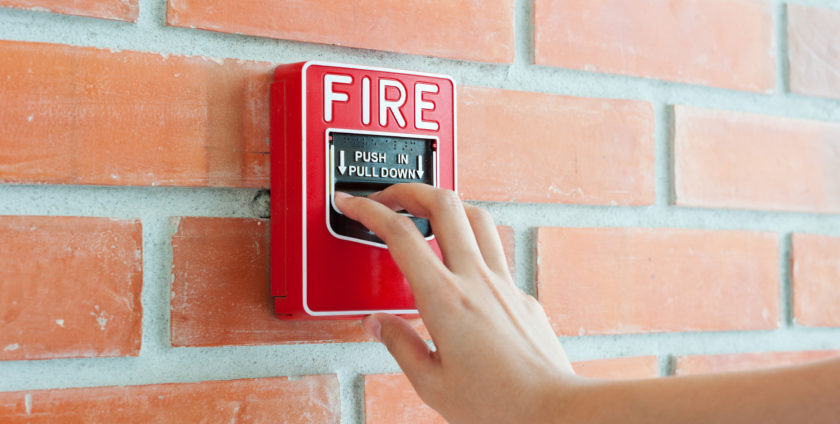
- By: Admin
- 0 comment
Active Fire Protection vs. Passive Fire Protection
Often, when we talk about a building’s fire protection system, the majority of people probably think about the buildings alarm and sprinkler systems when, in reality, it is much more. It is in fact a collaboration of systems between Active Fire Protection and Passive Fire Protection.
Active Fire Protection (AFP) is a set of systems that will involve some amount of interaction in order to work efficiently in the unfortunate event of a fire. These interactions could be manually operated, such as a fire extinguisher or automatic, like a sprinkler system, but either way they will require some amount of interaction. Some examples of AFP include fire/smoke alarm systems, sprinkler systems, and fire extinguishers and even firefighters. The fire/smoke alarm systems are used to detect whether there is fire and/or smoke in the building. The sprinkler systems are used to help slow the progress of the fire, and fire extinguishers and firefighters help to put out the fire altogether.
Passive Fire Protection (PFP) is a set of systems that compartmentalise a building by the use of fire-resistance rated walls/floors. Compartmentalising or dividing into sections of a building into smaller sections helps to slow or prevent the spread of fire/smoke from one room to the next. PFP helps by limiting the amount of damage done to a building and providing the occupants more time for evacuation. PFP such as the cementitious fireproofing material manufactured by LUCO, can provide various hours of fire protection and has been manufactured and tested to protect structural steel during a fire. LUCO’s PFP material can be found throughout the world in Airports, Stadiums, Residential and Commercial Buildings.
Active Fire Protection, Passive Fire Protection or Both?
So, do you need to worry about a passive fire protection system if you have a working active fire protection system? Or do you need to worry about active fire protection systems when you have passive fire protection system?
An active fire protection system takes action by helping to put out the fire, but they may not always function the way they are designed to work. It is very possible that a sprinkler could fail due to the lack of maintenance, water supply problems such as frozen pipes, or even insufficient water pressure. On the other hand, passive fire protection uses systems that help to control and prevent the spread of fire/smoke. However, it does not take any type of action, such as actually putting out the fire. Hence, both AFP and PFP are designed and meant to work together during a fire, and not one in place of the other. Both active and passive fire protection systems can control fires and together they help protect lives.
